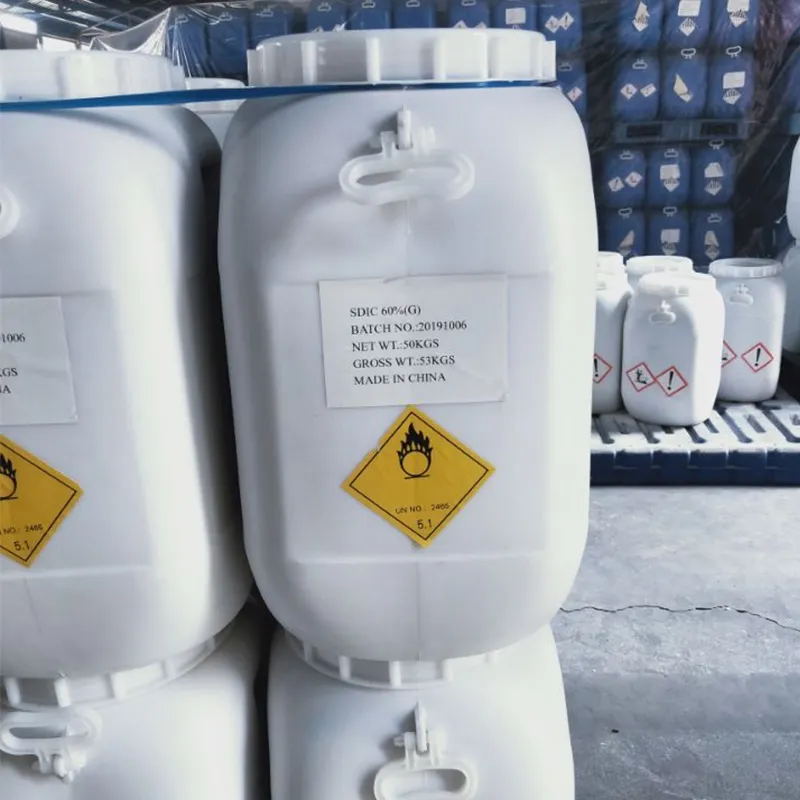
dmds chemical
The Importance of DMDS in Chemical Applications
Dimethyl disulfide (DMDS) is an organosulfur compound with the formula (CH3)2S2. It plays a pivotal role in various industrial applications, particularly in the chemical and petrochemical sectors. Its unique properties contribute to its effectiveness as a solvent, a reagent, and a key compound in the synthesis of other chemicals. Understanding DMDS is crucial for industries that rely on its capabilities.
Chemical Properties
DMDS is a colorless liquid with a strong, distinctive odor reminiscent of garlic or onion. Its structure consists of two methyl groups attached to a disulfide bond, which contributes to its reactivity and functionality. DMDS is soluble in organic solvents like ethanol and acetone but insoluble in water, making it an ideal candidate for various organic reactions. Its volatility and low boiling point of approximately 100°C allow for easy manipulation during chemical processes.
Applications
One of the primary usages of DMDS is in the petrochemical industry, where it serves as an effective catalyst and sulfurizing agent. It is often used to promote the desulfurization of petroleum products, enhancing the quality and reducing the environmental impact of fossil fuels. DMDS helps convert sulfurous compounds into more acceptable forms, facilitating compliance with environmental regulations and improving the marketability of fuels.
In the agricultural sector, DMDS has found a niche as a soil fumigant. It is employed to control pests and pathogens in soils before planting crops. The compound's effectiveness in eliminating harmful organisms without leaving significant residues makes it a preferred choice among many farmers. Using DMDS in agriculture assists in promoting healthier crops and ensuring better yields.
dmds chemical

DMDS is also a valuable reagent in organic synthesis. It is often used in the preparation of various sulfur-containing compounds, which are essential in producing pharmaceuticals, agrochemicals, and antioxidants. Its ability to facilitate the transfer of sulfur in chemical reactions is particularly important in synthesizing complex molecules, underscoring the significance of DMDS in research and development.
Safety and Environmental Considerations
While DMDS is useful in many applications, safety must be prioritized. The compound has a strong odor and can be irritating to the eyes, skin, and respiratory system. Proper handling, storage, and use of protective equipment are essential to mitigate potential health risks. Companies using DMDS should adhere to safety regulations and ensure that workers are trained in the appropriate safety protocols.
In terms of environmental impact, DMDS has a relatively low toxicity profile when compared to other sulfur compounds. However, its release into the environment can lead to unpleasant odors and potential harm to wildlife. As such, industries must implement strict management practices to limit any adverse effects.
Conclusion
Dimethyl disulfide (DMDS) is a versatile and essential compound in various industrial applications, from petrochemicals to agriculture and organic synthesis. Its unique chemical properties make it an effective agent for catalysis and pest control. However, with its benefits come responsibilities; safety and environmental considerations are paramount. As industries continue to explore sustainable practices, the importance of properly managing chemical compounds like DMDS will only grow. Understanding and utilizing DMDS responsibly can ensure that its benefits are harnessed while minimizing its impact on health and the environment.
-
Sodium Dichloroisocyanurate Safety Handling ProtocolsNewsJul.29,2025
-
Mining Chemicals for Copper Extraction Processes GuideNewsJul.29,2025
-
Fertilizer for Sale Shipping and Storage TipsNewsJul.29,2025
-
Dimethyl Disulfide as Sulfurizing AgentNewsJul.29,2025
-
Benzotriazole Safety Data Handling and Storage GuidelinesNewsJul.29,2025
-
Ammonium Bicarbonate Safety Handling Storage GuidelinesNewsJul.29,2025
-
The Transformative Role Of Trichloroisocyanuric Acid in Water TreatmentNewsJul.23,2025
Hebei Tenger Chemical Technology Co., Ltd. focuses on the chemical industry and is committed to the export service of chemical raw materials.
-

view more DiethanolisopropanolamineIn the ever-growing field of chemical solutions, diethanolisopropanolamine (DEIPA) stands out as a versatile and important compound. Due to its unique chemical structure and properties, DEIPA is of interest to various industries including construction, personal care, and agriculture. -

view more TriisopropanolamineTriisopropanolamine (TIPA) alkanol amine substance, is a kind of alcohol amine compound with amino and alcohol hydroxyl, and because of its molecules contains both amino and hydroxyl. -

view more Tetramethyl Thiuram DisulfideTetramethyl thiuram disulfide, also known as TMTD, is a white to light-yellow powder with a distinct sulfur-like odor. It is soluble in organic solvents such as benzene, acetone, and ethyl acetate, making it highly versatile for use in different formulations. TMTD is known for its excellent vulcanization acceleration properties, which makes it a key ingredient in the production of rubber products. Additionally, it acts as an effective fungicide and bactericide, making it valuable in agricultural applications. Its high purity and stability ensure consistent performance, making it a preferred choice for manufacturers across various industries.











